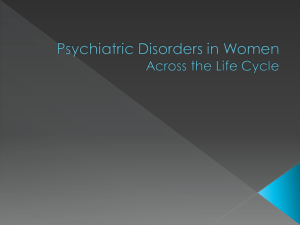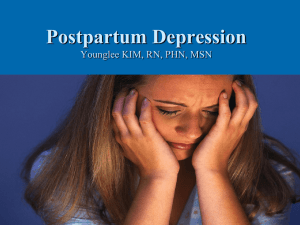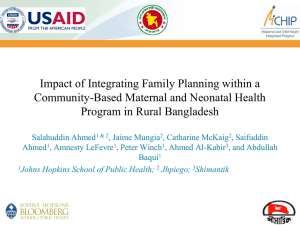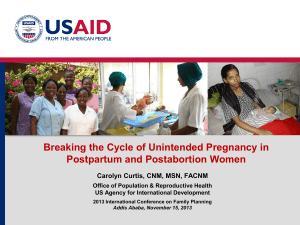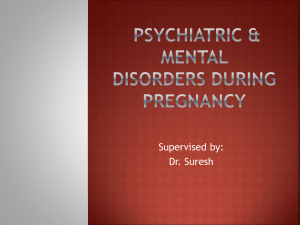TPO positives
advertisement
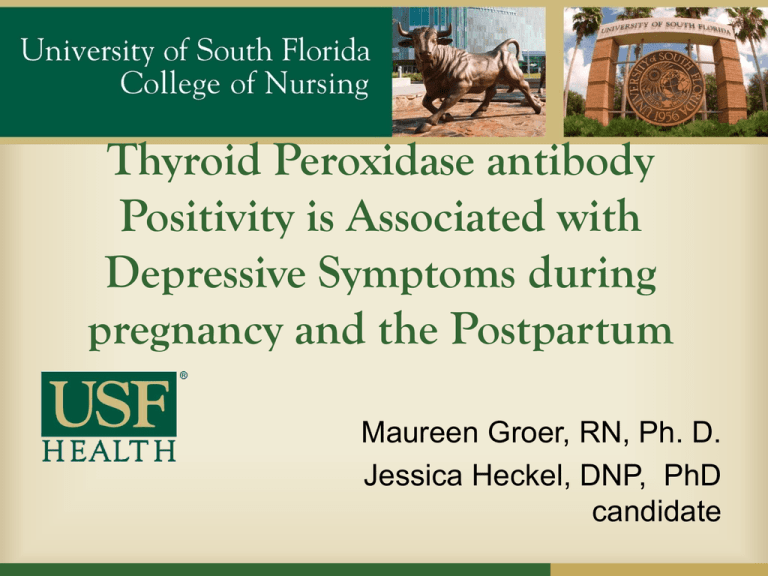
Thyroid Peroxidase antibody Positivity is Associated with Depressive Symptoms during pregnancy and the Postpartum Maureen Groer, RN, Ph. D. Jessica Heckel, DNP, PhD candidate TPO • Thyroid peroxidase autoantibodies (TPO) are present in 10% of pregnant women. Their presence indicate an incipient autoimmune process which increases risks development of postpartum thyroiditis (PPT). TPO • Microsomal enzyme catalyzing conversion of thyronine to thyroxin • If TPO positive in early pregnancy..chance if PPT is 50% • TPO IgG1,2, 3 complement fixing • TPO probably not causative…secondary aggravating role in the disease Postpartum thyroiditis • Incidence…5-8% • Risks : – – – – preceding episode FH of thyroid disease Type 1 diabetes Anti-TPO + 1. Lack of energy 2. Irritability 3. Nervousness 4. Weight loss 5.Weight gain 6. Sweating 7. Shaking hands 8. Palpitations 9. Heat Intolerance 10. Dry Hair 11.Puffy Face 12. Dry skin 13.Hair falling out 14. Constipation 15. Aches and pains 16.Tinglings or numbness 17. Cold intolerance 18. Poor Memory 19. Lack of concentration 20. Depression Thyroid SCL Literature review • AID and depression • TPO and depression in pregnancy • No studies following women through the postpartum Aims • The goals of our research were to determine TPO status at pregnancy and follow all TPO positive women through the postpartum to analyze the relationships between TPO status, development of PPT, and dysphoric moods across time. • A group of TPO negative women was included in order to compare these relationships. • The study was part of a larger parent study (R01NR05000) on trajectories of postpartum thyroiditis Participants • Pregnant women (n=631) were recruited at their prenatal clinics at mid-pregnancy and identified as either TPO positive or negative at that time. • Exclusion criteria included : age <18 or >45 years; known AID; previous thyroid disease; HIV +; medications that affect immunity; chronic diseases; serious mental illness; BMI <20; history of hyperemesis; current multiple gestation; in vitro fertilization (IVF); fetal abnormalities; unable to understand and speak the recruiter’s (English and Spanish) language; and being unable to participate in a six month postpartum follow up. Participants • All TPO positive (n=63) women were invited into the postpartum phase of the study, while a convenience sample of TPO negative women were selected by a random number generator to participate in the postpartum phase (n=72). • All TPO positive women had TSH measured at time of pregnancy testing, and at every later postpartum visit. A subset of TPO negative women had TSH levels measured during the postpartum. Women r received a monthly home visit by a research nurse for 6 months. . Instruments • At the pregnancy visit, participants completed a demographic questionnaire, the Profile of Mood States (POMS), the Perceived Stress Scale (PSS). • At the subsequent postpartum visits, these stress and mood instruments were used, as well as the Thyroid Symptom Checklist. • Data on breastfeeding, medications, health behaviors and health status were also collected by an investigator developed instrument. Thyroid status • Targeted PE • TSCL • TSH levels (<.3, >3.0 mIU/L) measured by ELISA (ALPCO) • Prolactin levels measured 4 times in postpartum (week one, months 1, 4,and 6) TPO positives • During pregnancy mean TPO IgG titer was 55.3, with a range of 20 to 220 IU/ml • TSH levels in all TPO positive women were in the normal range at pregnancy testing. • Of these 63 TPO positive women, 47 were enrolled in the postpartum phase, with 16 being lost to follow up or declining to enter into the postpartum phase. Demographics:Ethnicity TPO negative Caucasian African American Asian/Pacific Native American Hispanic Other 46.5% 12.9% 3.2% 1.6% 29% 6.5% TPO positive 45.7% 14.3% 2.9% 0 28.6% 9.5% Demographics:Income TPO negative $0-$14999 $15000-$24999 $25000-$39999 $40,000 + 16.5% 10.2% 8.7% 64.6% TPO positive 18.2% 13.7% 12.9% 55.3% Demographics:Education Middle school High school College graduate Post-graduate TPO negative 7.8% 38.8 39.8% 13.6% TPO positive 5.2% 42.2% 41.8% 10.8% Demographics:Marital status TPO negative Divorced Married Single 23.2% 72.5% 4.4% TPO positive 10% 63.15 26.9% Statistical Analysis • Data were examined for normality and log transformed if necessary. • T-tests were performed for analyzing group differences. • Repeated measures mixed model ANOVAs were performed to analyze differences over time. ANCOVA was done to covary age and marital status for effects on the depression symptoms/ TPO relationship. • The effect of PPT development on the relationships was analyzed. • Cronbach alphas were computed for the PSS and the POMS subscales Statistical Analysis • The Cronbach alpha reliabilities were 0.839 for the PSS, 0.91 for the POMS-depression , 0.89 for the POMSanger scale, and .85 for the POMS Total Mood Disturbance. Pregnancy Mood • The 63 TPO positive pregnant women had statistically significantly higher scores on the POMS depressiondejection subscale (8.5) compared to TPO negative women (5.9) at the time of pregnancy measurement (t=2.2 (df=590), p=.028). • There were 48 cases of women in the total pregnancy sample (6.8%) with scores of 20 or greater on the POMS-depression-subscale, indicating possible clinical depression. Twice as many TPO positive women had scores of 20 or greater compared to TPO negative women. The difference was significant (t (df=590 )= 2.2, p=.03). Postpartum Mood • At the initial postpartum testing, there were no differences in BMI, and reproductive history (number of pregnancies, preterm births, miscarriages, ectopic pregnancies) between the TPO positive and negative women. There were no differences in socioeconomic status, exercise, breastfeeding, smoking, or family histories of thyroid disease between TPO positive and negative. The only difference between the 2 groups at time one was age (TPO + slightly older and marital status (TPO+ more divorced, less single). Postpartum Mood • Of the 47 TPO positive women, 64% developed PPT at some point during the first six postpartum months. • These women with PPT had higher scores on hypothyroid symptoms (F (df=1,739)=6.7, p=.013) but not on hyperthyroid symptoms on the Thyroid Symptom Checklist compared to TPO negative women. • Three TPO positive women developed visible goiters, while 9 had palpable thyroid glands. • TPO positive women without PPT did not score differently on the thyroid symptom checklist compared to TPO negative women. • . Postpartum Mood • there were differences by TPO status on the POMS. Depression symptom reports were higher across the postpartum for TPO positive mothers. Anger subscale scores (F (1.131)=6.4, p=.013) and total mood disturbance scores (F(1,130)=5.3, p=.023) were also higher in the TPO positive group than in the TPO negative group Depression (F (1,129)=9.1, p=.009) Anger F (1,131)=6.4, p=.013) Total Mood Disturbance (F(1,130)=5.3, p=.023) Perceived Stress Breastfeeding • More TPO positive (74.3%) then TPO negative women (49.3%) were breastfeeding in this study (calculated as mean frequencies over the first three postpartum months). • However, prolactin was not significantly different in TPO positive compared to negative women or in women who developed postpartum thyroiditis. Discussion • The findings support a relationship between dysphoric moods and TPO antibody status across the perinatal period. • The relationship between TPO positivity (and autoimmune disease, in general) and depression may be bidirectional. Individuals with autoimmune disease are more likely to become depressed, and depressed individuals are more likely to have altered immune status • Inflammatory cytokines can alter brain neurochemistry systemic and trigger depression. It has even been hypothesized that depression may have an autoimmune origin Discussion • Both depression and autoimmune disease are far more common in females than males, and reproductive hormones have been thought to play some role. Further research into pathophysiological mechanisms, whereby anti-thyroid antibodies, in particular, can lead to dysphoria, and even clinical depression, is needed. • . Currently, TPO antibody status is not routinely measured during pregnancy, but this study suggests that the risk for perinatal depressive symptoms is increased by TPO positivity. Postpartum dysphoria and depression might be not only predicted but actually prevented through routine TPO antibody status determination Limitations This study has limitations related to the instrument used for screening dysphoria symptoms vs. clinical depression, and the relatively small number of TPO positive women.


